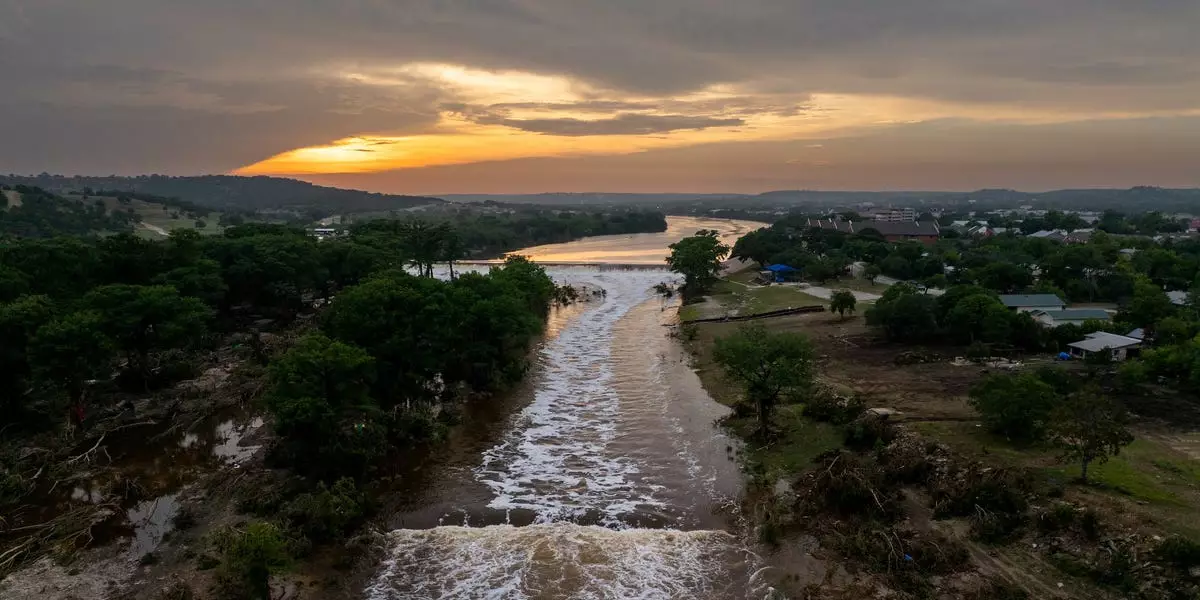The recent flooding in Texas Hill Country stands as a stark reminder of Mother Nature’s unpredictable fury and the vulnerability of our communities. With confirmed death tolls reaching at least 88, including an alarming number of children, this tragedy marks one of the deadliest natural disasters in a century within the United States. Such devastation compels us to confront not only the immense power of natural forces but also the critical shortcomings in our preparedness and response systems.
What makes this catastrophe uniquely painful is the high number of young lives lost—many children caught unprepared in a wilderness of water and chaos. Camps like Mystic, steeped in history and tradition, became accidental death traps when the rains struck suddenly, and the river surged in minutes. The event highlights an urgent need to evaluate how authorities anticipate, communicate, and respond to flash floods, especially during peak recreational seasons when families gather for holidays or summer camps.
The Human Toll and the Emotional Fallout
The emotional impact of this tragedy cannot be overstated. Beyond the raw statistics lies a profound human story—families shattered, caregivers mourning children, and communities grappling with grief. Camp Mystic’s longstanding legacy as a cherished summer retreat, frequented by political families and generations of Texans, underscores the deep sense of loss experienced locally and nationally.
The death of key figures, such as the camp’s director who perished amid rescue efforts, amplifies the narrative of sacrifice and the unpredictability of rescue operations in such extreme conditions. As we mourn, we must also reckon with why the early-warning systems failed so many and why some campers were left in peril despite widespread awareness of flood risks. The tragedy pushes to the forefront questions about whether existing alert systems adequately cover vulnerable areas and whether evacuation protocols are robust enough to prevent such avoidable loss of life.
Systemic Flaws: A Wake-Up Call for Better Preparedness
The catastrophe exposes critical flaws in disaster management that demand urgent attention. Public officials and emergency planners often emphasize response over prevention, but with flash floods that escalate rapidly, forward-thinking strategies are vital. One cannot ignore the fact that many residents and visitors remained unaware of incoming danger until it was too late.
There is a disturbing sense that warning systems, especially in outdoor recreational zones, are insufficiently sophisticated or poorly disseminated. Many could argue that better communication infrastructure—such as rapid alerts via text, sirens, or integrated app notifications—could significantly reduce casualties. However, technology alone cannot suffice; comprehensive evacuation plans tailored for sudden floods, especially in remote or semi-remote areas like camps near rivers, are essential.
Furthermore, the tragedy raises questions about climate resilience and whether current infrastructure can withstand the intensifying storms driven by climate change. Are our local governments investing enough in flood mitigation measures? Are communities educated sufficiently about flood risks and safety protocols? One thing is clear: complacency is no longer an option as climate patterns become more unpredictable and extreme.
The Role of Community and Volunteer Efforts in Recovery
In the aftermath of such tragedy, the resilience of communities and the dedication of volunteers often define the recovery trajectory. Several organizations involved in relief efforts have stepped into the breach—Red Cross, Texas Search and Rescue, and charitable entities led by figures like José André́s. Their roles extend beyond immediate rescue; they provide emotional support, distribute necessities, and lay the groundwork for rebuilding.
The importance of organized, well-funded relief operations cannot be overstated. Their work acts as a testament to the compassion and strength inherent in communities facing crisis. Yet, this also signals a grim truth: lasting recovery requires systemic change. Reliance on volunteer efforts, while noble, cannot replace comprehensive disaster preparedness and sustainable infrastructure improvements.
The flood’s aftermath should serve as a catalyst for policy reforms that prioritize early warning systems, flood-resistant infrastructure, and community education. These steps are vital not just for preventing future tragedies but for fostering resilient communities capable of weathering natural calamities with fewer casualties and less trauma.
This disaster, tragic as it is, underscores an uncomfortable reality: the increasing frequency and severity of natural disasters demand a reevaluation of our approach to safety, climate adaptation, and community resilience. Only through honest reflection, proactive planning, and collective action can we hope to mitigate the impact of future calamities and protect the most vulnerable among us.

